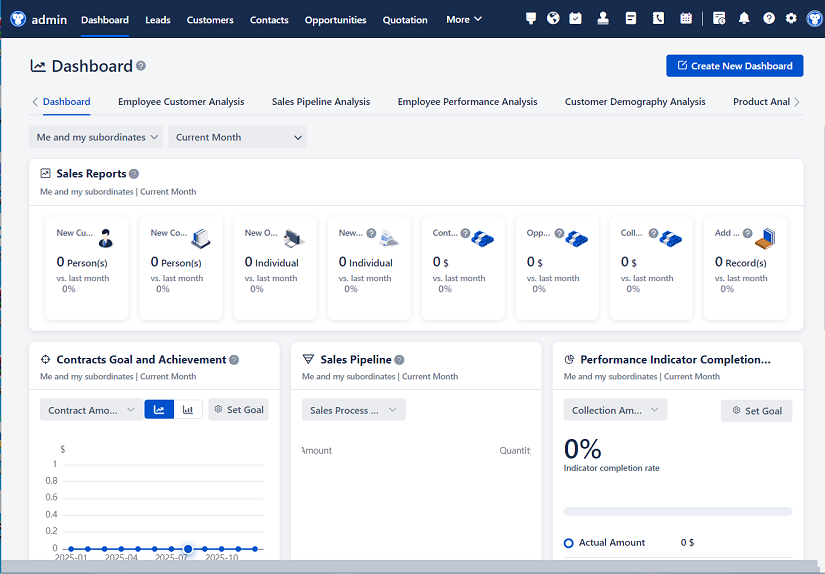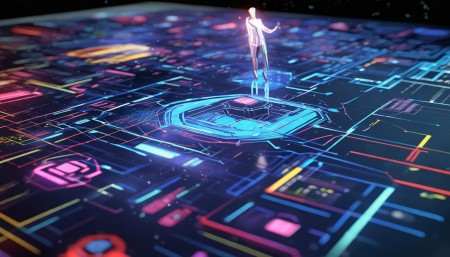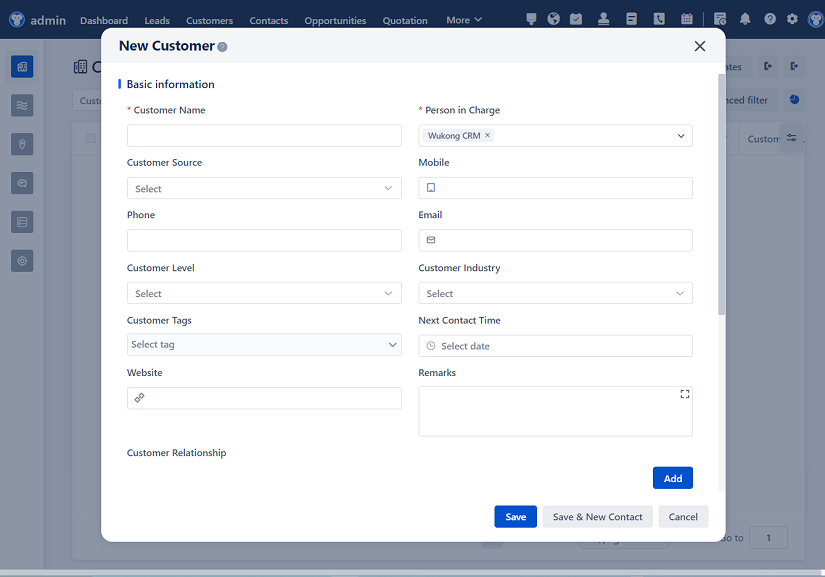
△Click on the top right corner to try Wukong CRM for free
Hey there! So, you're curious about CRM system structure diagrams, huh? Well, let's dive right in. Imagine you're running a business, and you want to keep track of all your customers, their preferences, and how they interact with your company. That’s where a Customer Relationship Management (CRM) system comes in. It’s like having a super-smart assistant that helps you manage all the nitty-gritty details about your customers.

Now, when we talk about a CRM system structure diagram, think of it as a map. You know, like the one you use when you’re on a road trip. But instead of showing you the best route to the beach, this map shows you how different parts of the CRM system work together. It’s a visual representation that makes it easier to understand the whole system, from the top down.
Let’s start with the basics. At the very core of any CRM system, you have the customer data. This is where all the information about your customers lives. Think of it as a big, organized filing cabinet, but digital. You’ve got names, addresses, contact information, purchase history, and even notes from your last conversation with them. It’s all there, neatly stored and ready for you to access whenever you need it.

But wait, there’s more! A CRM system isn’t just about storing data; it’s also about making that data useful. So, the next layer in our structure diagram is the analytics and reporting tools. These are like the brains of the operation. They take all that raw data and turn it into meaningful insights. For example, you can see which products are selling the most, or which marketing campaigns are bringing in the most leads. It’s like having a crystal ball that tells you what your customers want before they even know it themselves.
Moving on, we come to the sales and marketing automation tools. These are the workhorses of the CRM system. They help you automate repetitive tasks, so you can focus on what really matters—building relationships with your customers. Imagine setting up an email campaign that automatically sends out a thank-you note after a customer makes a purchase. Or, maybe you want to follow up with a special offer a few weeks later. These tools make it all possible, and they do it without you having to lift a finger.
Of course, no CRM system would be complete without some good old-fashioned customer service features. This is where you handle all the interactions with your customers, whether it’s through phone, email, or live chat. The CRM system keeps track of every interaction, so you always know what’s going on. It’s like having a personal assistant who remembers everything, so you don’t have to.
Now, let’s talk about integration. In today’s world, businesses use a lot of different tools and systems. Your CRM system needs to play nicely with all of them. That’s why integration is such a big deal. Whether it’s your accounting software, your e-commerce platform, or even your social media accounts, a good CRM system will connect with all of them seamlessly. It’s like having a Swiss Army knife for your business—everything you need, all in one place.

And then there’s the user interface. This is what you and your team see when you log into the CRM system. It needs to be intuitive and easy to use. After all, if it’s too complicated, no one will want to use it. A well-designed user interface makes it simple to find the information you need, update records, and run reports. It’s like having a dashboard in your car that shows you everything you need to know at a glance.
So, that’s the basic structure of a CRM system. But let’s not forget about security. With all that sensitive customer data, you need to make sure it’s protected. A good CRM system will have robust security measures in place, including encryption, access controls, and regular backups. It’s like having a high-tech vault for your most valuable assets.
Now, I know what you might be thinking: “This all sounds great, but how do I choose the right CRM system for my business?” Well, that’s a great question. The first thing you need to do is figure out what your specific needs are. Do you need a system that’s great for sales, or one that’s better for customer service? Maybe you need something that integrates with your existing tools. Once you know what you need, you can start looking at different options and comparing them.

Another thing to consider is scalability. As your business grows, your CRM system should grow with it. You don’t want to outgrow your system and have to switch to a new one a year down the line. That’s a hassle, and it can be expensive. So, look for a CRM system that can handle your current needs and has the flexibility to adapt as your business evolves.

And, of course, you’ll want to think about the cost. CRM systems can range from free to very expensive, depending on the features and the number of users. Make sure you get a clear understanding of the pricing model, and factor in any additional costs like training, support, and upgrades. It’s like buying a car—you need to think about the total cost of ownership, not just the sticker price.
One more thing to keep in mind is the user experience. If your team finds the CRM system difficult to use, they won’t use it. And if they don’t use it, it’s not going to do you much good. So, make sure to involve your team in the selection process. Get their feedback on the user interface, the features, and the overall ease of use. It’s like trying on a pair of shoes—make sure they fit before you buy them.
Alright, I think that covers the basics. But I’m sure you still have some questions. Let me try to answer a few of them:
Q: What’s the most important feature to look for in a CRM system? A: It really depends on your business, but generally, the ability to integrate with other tools and the quality of the user interface are key. You want a system that works well with your existing setup and is easy for your team to use.
Q: How do I ensure the security of my customer data in a CRM system? A: Look for a CRM system that offers strong encryption, access controls, and regular backups. Also, make sure to follow best practices for data security, like using strong passwords and limiting access to sensitive data.
Q: Can a CRM system help with customer retention? A: Absolutely! A good CRM system can help you track customer interactions, identify patterns, and send targeted communications. This can help you build stronger relationships and keep your customers coming back.

Q: Is it possible to customize a CRM system to fit my specific needs? A: Yes, many CRM systems offer customization options. You can add custom fields, create custom reports, and even develop custom integrations. Just make sure to choose a system that supports the level of customization you need.
Q: How long does it typically take to implement a CRM system? A: It varies, but a typical implementation can take anywhere from a few weeks to a few months, depending on the complexity of your needs and the size of your organization. Make sure to plan for a smooth transition and provide adequate training for your team.
I hope that helps! If you have any more questions, feel free to ask. Good luck with your CRM journey!

Related links:
Free trial of CRM
Understand CRM system
AI CRM Systems

△Click on the top right corner to try Wukong CRM for free